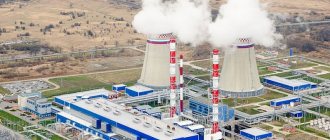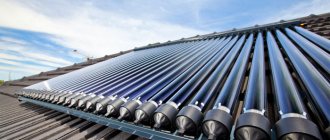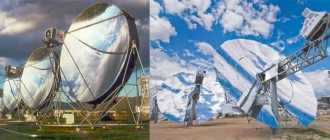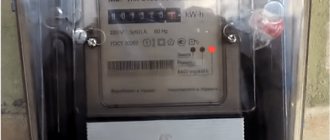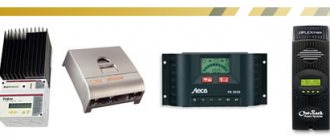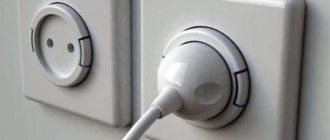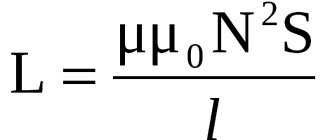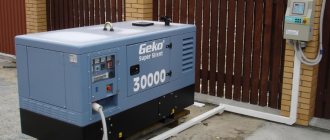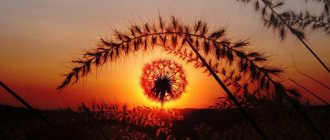Almost all electricity is produced by installations using energy from natural resources. The pace of production is constantly increasing, and minerals will sooner or later run out. In this regard, promising developments are already underway, new technologies are being introduced that act as alternative sources of electricity. One such option is wind power plants, used in the manufacturing sector and in the private sector. By converting wind energy into electricity, they are able to meet the basic power needs of appliances and electrical equipment.
Physical foundations of wind energy. Wind characteristics
The primary cause of the formation of wind, as well as many other dynamic phenomena occurring on the surface of the Earth and in its atmosphere, is the energy of the Sun.
Direct absorption of solar energy by the atmosphere is very insignificant, since only water vapor, ozone, carbon dioxide and dust actively absorb it. As for the main components of the air shell, nitrogen and oxygen, these gases are transparent to sunlight. Therefore, the main part of solar energy is transferred to atmospheric air from the heated surface of the Earth in the form of infrared radiation, molecular diffusion, convective heat transfer and other physical phenomena. Air, heating up near the surface of the Earth, rises upward, since its specific gravity becomes less when heated. This vertical movement of air is primary and fundamental in a series of sequential processes that cause the appearance of wind. The sequence of processes of air movement from heating to cooling and again to heating, etc., as it moves relative to the Earth’s surface rotating around an axis in time and space, leads to the emergence of atmospheric circulation (Fig. 1).
Rice. 1. Atmospheric air circulation from the equator to the north pole
Under the influence of circulation, the movement of air masses occurs both in time and in space:
- microscale (duration up to 1 hour, movement over a distance of no more than 20 km),
- synoptic (duration more than two days, movement over a distance of more than 500 km),
- mesoscale (at distances intermediate between those indicated above).
The influence of the shapes and sizes of oceans and continents distorts the overall stable picture of circulations along the coasts. With distance from the coasts, the circulation stabilizes, but, nevertheless, the influence of local features on wind speed is sometimes significant (Fig. 3).
Rice. 3. Influence of relief and surface roughness on wind speed
In wind energy calculations, the initial characteristics of the general level of wind intensity are determined from meteorological data over a long period of time, comparable to the prescribed operating life of a wind energy plant of 20–25 years.
Average wind speed is defined as the arithmetic mean obtained from a number of wind speed measurements taken at regular intervals over a given period.
Background wind speed is the average annual (seasonal or monthly) wind speed for a 20–25-year period, calculated by calculation to the conditions of an open (without the influence of large bodies of water) flat terrain in the ground layer at a height of 10 m from the surface of the earth for a 20–25-year period, estimated by long-term studies state meteorological stations and posts (Fig. 5).
Rice. 4. Background wind speed (height 10 m)
To assess the effectiveness of using wind turbines, it is necessary to know the average annual wind speed at the height of the support. This speed can be approximately calculated using the following empirical formula:
where Uх, Uф – wind speeds at heights h10 = 10 m and hх= x m; m is the exponent of the power function.
Wind speed at a height of 10 m (see Fig. 4), as already mentioned, is measured by meteorological stations. The value of m in many works is taken to be m = 0.143. Regulatory documents recommend m = 0.2.
One example of calculating wind speed at a height of 60 m is shown in Fig. 5. However, calculated wind speed values are not enough to make decisions on financing the construction of wind turbines. It is necessary to carry out practical measurements at the height of the wind turbine (80–120 m) throughout the year. For these purposes, mast structures are built and special equipment is used with remote transmission of data on speed and other parameters online.
For the energy use of wind flow, it is necessary to know the specific kinetic energy, i.e., the energy of an air mass with a density r (kg/m3) and a speed v (m/s).
Air density ρ under normal conditions is 1.225 kg/m3. A wind flow with a speed of 4 m/s and passing through a cross section with an area of 1 m2 has an energy of 20 W.
The main indicator of the efficiency of wind turbines is the wind flow energy utilization coefficient ξ (wind flow power utilization coefficient), i.e. the ratio of the amount of mechanical energy developed by the wind turbine to the total wind energy passing through the area swept by the wind turbine (ideal value ξ = 0.593). The swept area refers to the area of the circle created by the wind wheel during rotation.
Rice. 5. Background wind speed (m/s) (height 60 m, calculated values)
The efficiency of using wind energy depends on the number of days per year during which the wind speed is sufficient to operate wind turbines. It is assessed using the capacity factor - the ratio of actually generated energy to theoretically possible.
The typical value of the coefficient is 15–40% (the maximum value is achieved for areas with high wind loads). The average value of the coefficient for wind energy in Germany in 2012 was 17.5%, in Europe – 20–25%, and a 1.5 MW wind turbine in Grabniki (Novogrudok district) – 32%.
Example: a 1 MW turbine with a capacity utilization factor of 35% will not produce 8760 MWh per year (1 × 24 × 365 = 8760), but only 1 × 0.35 × 24 × 365 = 3066 MWh, i.e. i.e. its actual power will be 0.35 MW.
Modern methods of producing electricity from wind energy
Today, the most common way to convert the energy of wind flows is the use of wind generators. These are devices that convert flow energy into rotational motion, which is transmitted to a generator that produces electric current. The generator charges the battery, which, when discharged, powers consumers through the inverter.
It is noteworthy that all the variety of designs and types of wind turbines has practically no effect on the state of the electronics - its composition, starting with the generator, is the same for all types of installations and differs only in power.
All the variety of designs relates only to the rotating impeller. There are different design options here:
- horizontal
- vertical
The names of these groups indicate the location of the rotor rotation axis. Horizontal designs are somewhat more efficient, which has led to their use in large wind turbines. Vertical devices, in turn, are more suitable for servicing small private farms, houses, lighting or water supply lines.
The increased interest in wind power plants has prompted an increase in the development of various wind turbine design options. The main direction of the designers' search is the optimal version of the impeller, capable of rotating in low winds. This is relevant for the conditions of Russia, since the prevailing winds in our country are weak and, to a lesser extent, medium.
In addition to rotary installations, other designs are also being considered. For example, Dutch designers have developed a windmill that runs on water droplets. They transfer charge from one electrode to another, increasing its potential. The development is completely new, no specifications are publicly available yet, but interest in such a design is very high.
Classification of wind power plants (WPP)
Design features and characteristics of wind turbines with a horizontal axis of rotation
Wind power plants can be broadly classified by power (Fig. 6), location (on land - onshore) and in shelf zones of water basins (offshore) (Fig. 7), as well as by design (wind turbines with a horizontal and vertical axis of rotation of the wind wheel ( see Fig. 8, Fig. 9).
Rice. 6. Classification of wind turbines by power
Rice. 7. Location of wind turbines on land and in shelf zones of water basins (offshore wind turbines)
Rice. 8. General view of a wind turbine with a vertical axis of rotation
Design features of wind turbines with a horizontal axis of rotation. As can be seen from Fig. 9, 10 the design of a wind turbine includes mechanical, aeromechanical and electrical (electronic) parts. This division is quite arbitrary, since, for example, a tracking system includes both mechanical and electronic components.
Rice. 9. Typical structural elements of a wind turbine with a horizontal axis of rotation
Rice. 10. Structural elements located in the gondola: 1 – wind wheel hub; 2 – fairing; 3 – generator; 4 – multiplier; 5 – tracking system; 6 – disc brake; 7 – main shaft; 8 – azimuth bearing; 9 – gondola frame
A gandola with a wind wheel is called a wind generator. The wind generator is placed (mounted) in the upper part of the tower (Fig. 11). The towers of modern wind turbines have a telescopic shape and are assembled on the installation foundation from a number of sections using powerful threaded connections.
Rice. 11. Installation of a modern wind turbine tower
The rotor of a wind generator (Fig. 12) consists of a wind wheel and a primary shaft, from which wind energy is transmitted to the working mechanisms of the wind turbine.
Rice. 12. Wind turbine rotor design
The wind wheel is a hub with blades attached to it (Fig. 13).
Rice. 13. Design of wind turbine wheel
The multiplier (gearbox) (Fig. 14) increases the speed of the input shaft to the operating value of the generator speed (from 15–20 to 1800 rpm).
Rice. 14. General view of the wind turbine multiplier
A gearbox is a complex mechanical device that contains many parts (gears, axles, worm gears, etc.). Therefore, the gearbox is one of the least reliable wind turbine devices. If it fails, replacement or repair, given the height of modern wind turbines (80–120 m), is an expensive operation. A solution to this problem was found by Enercon, which developed a gearless wind turbine design. As can be seen from Fig. The 15th axis (hub) of the wind turbine wheel is connected directly to the generator axis. The absence of the need to increase the speed on the generator shaft is achieved through the use of a multi-section design of the generator stator and rotor.
Such wind turbines are more reliable and durable, which is reflected in their higher cost (by 10–20%).
Low-power wind turbines (30–5000 W) have a simpler design (Fig. 16). They are used as chargers for battery systems and the creation of local electrical networks in places where there is no access to the general power grid, etc. (Fig. 17).
Rice. 15. Design of a gearless generator and general view of a wind turbine from Enercon: hub – hub; yaw system – deflection system; canopy – lid; bed plate – base plate; tower – tower; pitch controller – blade pitch controller; yaw drive – deflection drive; nacelle – gandola
Rice. 16. General view of low-power wind turbines
Rice. 17. Application of low power wind turbines
The construction of offshore wind farms has become widespread and, as a result, wind turbines designed for use in shelf zones of water basins have appeared (Fig. 18).
Rice. 18. General view of offshore wind farms
The advantage of offshore wind farms is the ability to accommodate a large number of high-power wind turbines, with less impact on public health (noise, optical effects, etc.). However, the cost of their construction and maintenance is slightly higher than for land-based wind turbines.
The advantages of wind turbines with a horizontal axis of rotation include:
- the changing angle of attack of the wind turbine blades allows you to use wind energy to the maximum depending on the time of day and season;
- a tall mast facilitates the use of wind energy at a greater distance from the ground, which increases the efficiency of the installation (for every 10 m increase in height, the wind speed increases by 20%).
Disadvantages of wind turbines with a horizontal axis of rotation:
- the need to use high masts (towers) with a height of more than 100 m and long blades makes their transportation and installation difficult (the cost of transportation and installation is up to 20% of the total cost of the project);
- installation of high-power wind turbines requires special equipment (lifting) and highly qualified personnel, therefore the production of such wind turbines is carried out only by a small number of countries;
- due to the large size of wind turbines, they interfere with radio communications and the operation of radar installations;
- the need for special systems for orienting the wind turbine to the wind.
Purpose of wind power plants
To satisfy the daily needs of the consumer, the operation of equipment that is capable of delivering up to 10 kW of electricity is required. In this case, an ideally installed wind system should consist of several wind generators that accumulate energy into a common battery. This allows you to adjust the battery output by connecting additional or disconnecting an extra windmill.
Uninterrupted energy supply can be achieved by installing an autonomous complex. But here a problem emerges and the main disadvantage of a modern wind power plant in comparison with thermal power plants, which is the stability of the wind flow to generate constant power energy. To avoid problems, many complexes are equipped with additional or backup power sources in the form of diesel or gasoline generators, which can be automatically turned off or connected depending on the wind strength.
Design features and characteristics of wind turbines with a vertical axis of rotation
Currently, various types of wind turbine rotor designs with a vertical axis of rotation are used: Savonius; Savonius spiral design; Daria; Giromila; Helikoidy and others.
The Savonius rotor was created by the Finnish engineer of the same name in 1922 (Fig. 19, 30). The principle of its operation is as follows. When exposed to air masses on open diaphragms of a semicircular or logarithmic wind rotor profile
Savonius, there is a difference in the resistance forces of the diaphragms to the wind flow. When flowing around a concave diaphragm, the wind flow resistance coefficient is approximately 1.3. When flowing around the same diaphragm in the opposite direction, the drag coefficient is 0.35. The difference in resistance forces leads to the creation of torque on the drive shaft.
Rice. 19. Operating principle and general view of the Savonius rotor
Currently, several design versions of wind turbines based on the Savonius rotor are produced, which differ in the layout of the rotors, their number in the installation, and the materials used.
Rice. 30. Design options for wind turbines based on the Savonius rotor
High material consumption and difficulties with balancing hinder the industrial production of powerful Savonius wind rotors. Wind turbines with such wind turbines are intended for autonomous technological facilities with low power consumption and energy quality.
Currently, rotor diaphragms are made of plastic, which reduces their cost and simplifies balancing.
The advantages of wind power plants of this type are low noise level, small footprint, excellent performance in low winds (3–5 m/s). Since this is a rotor with a vertical axis of rotation, it does not need wind-oriented devices, which greatly simplifies the design - the wind wheel is exceptionally simple. However, this turbine is the slowest, and, as a result, has a very low wind energy utilization factor, only 0.18–0.24 and a power utilization factor of 17–18%.
The Darrieus rotor (French aeronautical engineer, invention 1931) is a symmetrical structure consisting of two or more aerodynamic wings mounted on radial beams (Fig. 31).
a b
Rice. 31. General view and principle of operation of wind turbines based on Daria rotors
Each wing moving relative to the flow is subject to a lift force, the magnitude of which depends on the angle between the flow velocity vectors and the instantaneous speed of the wing. The lifting force reaches its maximum value when these vectors are orthogonal. Due to the fact that the vector of the instantaneous speed of the wing changes cyclically during the rotation of the rotor, the moment of force developed by the rotor is also variable.
Since movement of the wings is necessary to generate lift, the Darrieus rotor is characterized by poor self-starting. Self-starting is improved when three or more blades are used, but even in this case, preliminary acceleration of the rotor is required.
Giromil turbine (a type of Darrieus turbine) (Fig. 32). Unlike the Darrieus turbine, the blades have a direct design and the following advantages:
- high starting torque;
- wide torque curve;
- relatively low rotation speed of the blades, lower stresses on the blades;
- higher efficiency;
- best performance in wind turbulence.
Rice. 32. General view of a wind turbine based on the Giromil turbine
Wind power
Wind energy was used in ancient Babylon several thousand years BC. This ancient city was at its peak in the sixth century BC. e. And during this period many significant discoveries were made. For example, a device for draining swamps appeared. Peasants in ancient Egypt used wind power in mills to grind flour. Meanwhile, in ancient China, water was pumped out of rice fields using mechanized devices with blades rotated by the wind. On the European continent, the first mechanisms powered by wind energy appeared in the 12th century AD.
Wind power plant
At the same time, a real breakthrough in the use of wind energy occurred only in the last century.
Wind power plants appeared in which the wind not only rotated the blades, but generated the electricity necessary to operate a variety of devices. Thanks to this, the popularity of “windmills” has increased sharply. They began to appear near private houses and industrial facilities. After this, several generations of wind farms came out. First of all, they began to appear in coastal areas where strong winds blow. Let's take a look at what wind power plants are.
Autonomous and network use of wind turbines
Despite the fairly developed state power supply system, there is always a need for autonomous energy supply, independent of centralized energy supply. This is caused by the trend of development of small but very effective farmstead-type farms. Problems in energy supply have not disappeared for large agricultural enterprises, which, due to their production specifics, combine an extensive network of locally located production facilities at a fairly large distance from the power grid. This problem can be solved using autonomous wind power plants (Fig. 33).
Rice. 33. Autonomous use of wind turbines
Any autonomous system, including wind-electric, operates independently of the centralized power supply network. Under these conditions, a wind turbine can operate independently, be used as a backup to any other generator, or be used in combination with other power plants as a component of a combined power supply system. Such systems are also used to lift water or to supply electricity to homes, farms or small business premises.
As can be seen from Fig. 34, a control system with a special converter is required, which converts direct current into alternating current, increases it to mains current and stabilizes the voltage. In addition, to accumulate electrical energy and use it in the absence of wind, the system must include batteries of the required capacity.
Rice. 34. Connection diagram of an autonomous wind turbine to a consumer
The autonomous power supply system may also include other renewable energy sources (solar batteries) (Fig. 35) and a diesel generator, which will ensure uninterrupted power supply to the autonomous consumer even in the absence of wind for a long time.
When connected to the grid, the electricity generated by a wind turbine located on the customer's premises can also be used as a supplementary source to the public energy supply. In conditions of parallel autonomous power supply, the generated electricity is used as a priority to cover one’s own energy needs, and the surplus is “delivered” to the power grid at higher (“green”) tariffs.
Rice. 35. Scheme for the integrated use of renewable energy sources for autonomous energy supply to consumers
In this case, the consumer must have an additional electricity meter installed (negative sequence meter) transmitted to the public grid and the wind turbine must be registered with the Ministry of Natural Resources and Environmental Protection as a renewable source.
The power of the connected wind power plant in this situation must be at least 10 kW. The maximum power of connected wind turbines should not exceed 20% of the power system power, as frequency and voltage fluctuations may occur.
Wind farms with a capacity of more than 100 MW (weather-dependent energy supply) pose significant problems for the stable operation of the energy network, the uniformity of generation and transmission of electricity to the network.
Operating principle and design
A wind power plant has a fairly simple operating principle. The wind rotates a rotor with blades, which is connected to the generator shaft. In some cases it is connected directly, but more often through a transmission system. Today there are also designs of wind generators where the wind does not rotate the blades, but presses on a plate with a piston. The amount of electricity generated in a wind farm depends on the diameter of the blades and the rotation speed of the wind.
One of the types of wind generator.
The stronger the wind turns the blades, the more electricity will be generated.
But electricity generation depends not only on wind speed. The height at which the wind generator is suspended also has a big influence. Closer to the ground, the wind strength decreases and the speed becomes slower as landscape elements interfere. Therefore, the wind wheel should be installed as high as possible. There are 3 main types of wind power plants:
- Propeller;
- Drums;
- Carousel.
In propeller installations, the shaft is in a horizontal position relative to the wind. They have a special stabilizer located on the reverse side of the wind wheel. It serves to move the structure along the wind. This option is the most economical of all wind power plants. The rotation speed in these installations depends on the number of blades. In most cases out of 3. the efficiency of propeller power plants is 48%.
In the case of drum and rotary wind farms, the shaft with the blades is in a vertical plane. This type of installation is used in cases where the wind direction does not matter. The torque of such devices is greater than that of propeller installations. But the efficiency is lower (10─15%). On the one hand, everything looks good, but on the other, the operation of wind generators is highly dependent on external factors that we cannot influence.
The main problem is the variability of the wind. Therefore, wind power plants must take this factor into account in their work. Therefore, in addition to the wind generator itself, they contain batteries for storing energy, an inverter for controlling their charge, and an inverter for converting voltage. That is, almost all the same auxiliary components as in solar systems.
Wind generator
The problem when operating wind power plants is also that too strong wind can damage the installation. But, despite this, wind turbines are profitable to use to generate electricity in some regions of our planet. In this case, the ideal option is when the wind generator operates in conjunction with a household electrical network or a fuel generator. Then there will be constant electricity, even when it’s calm outside. There are many cases where wind turbines are used together with solar panels.
Wind power parks
A wind energy park is understood as a set of wind turbines located and producing electricity in one localized area, which, along with the individual one, have a common management and control system.
According to existing international standards and the Technical Code of the Republic of Belarus, the following requirements for the placement of wind farms are established:
- necessary distance of the wind farm from inhabited areas (minimum distance from single residential buildings at a distance of at least 300 m, villages - 800 m);
- the noise level emitted by wind turbines at night should be in the range of 35–40 decibels;
- the distance between installations along the front (along the main wind direction) should be at least 3–5 times the diameter of the wind turbine rotors (Fig. 36);
- in the depth of the main direction between the wind turbines, the distance must be at least 8–10 diameters of the wind turbine rotors; in other directions, the distance must be at least 5 diameters of the wind turbine rotors;
- The distance between the wind farm wind turbine and the nearby forest should be at least 15 times the height of the trees in the forest (Fig. 37).
Rice. 36. Placement of wind turbines in a wind farm in the main wind direction
Rice. 37. Placement of wind turbines in a wind farm near forested areas
One of the requirements for locating wind farms is the absence in the selected area of the proposed construction of reservoirs, such as rivers, lakes, swamps, since their presence will lead to various technical problems, in particular:
- impossibility of using a heavy-duty crane for installation of wind turbines;
- difficulties in laying cable routes to connect the electrical part of the wind turbine;
- complication of the wind turbine foundation design caused by possible high groundwater levels;
- the need to fill (wash) soil and raise the ground level of the construction site.
To determine the best location for the future wind farm location, you must:
- know the best wind conditions in the surrounding area;
- have a map according to which it will be possible to correctly plan a specific location for the construction of a wind farm (Fig. 38);
The main factors that influence the decision to locate a wind farm are:
- the presence of nearby good access roads (sea ports, railway stations and railway tracks, highways, etc.) or the possibility of constructing special temporary roads for transporting large structures (Fig. 39);
- the proximity of the location of the wind turbine to high-voltage power lines (possible locations for connecting the wind farm to a high-voltage network of 110 kV), the possibility of laying a high-voltage electric cable.
Rice. 38. Layout plan for wind turbines of the “NORDEX N-80/2500” type
Rice. 39. Transportation of structural elements of wind turbines
Permission to locate a wind farm is issued by the district administration after coordination with environmental, sanitary-epidemiological, fire services, forestry and other organizations, including the Ministry of Defense, since wind turbines affect radio communications and the operation of radar stations.
Wind energy and possibilities for its use
Lecture 5
The main cause of wind
is the uneven heating of the earth's surface by the sun. The earth's surface is heterogeneous: land, oceans, mountains, forests cause different heating of the surface under the same latitude. The rotation of the Earth also causes deviations in air currents. All these reasons complicate the general circulation of the atmosphere. A number of separate circulations arise, connected to one another to one degree or another.
At the equator, near the earth's surface, there is a calm zone with weak, variable winds. To the north and south of the calm zone there are zones of trade winds, which, due to the rotation of the Earth from west to east, have a deviation to the west. Thus, in the northern hemisphere, constant winds come from the northeast, in the southern hemisphere - from the southeast, as shown in the diagram in Figure 1.
Figure 1 - Scheme of the general circulation of the earth's atmosphere
According to the territorial principle, global and local winds can be distinguished.
Global winds include trade winds and westerly winds.
Trade winds extend to approximately 30° north and south latitudes and are characterized by uniform air currents in direction and speed. The average speed of the southeastern trade winds of the northern hemisphere at the surface of the earth reaches 6...8 m/s. These winds near large continents are disrupted by strong annual fluctuations in temperature and pressure over the continents. The height of the trade wind layer extends from 1 to 4 km. Above them there is a layer of variable winds, and above this layer there is a zone of anti-trade winds blowing in the direction opposite to the direction of the trade winds. The height of the anti-trade wind layer varies from 4 to 8 km depending on the time of year and location.
Local winds.
Special local conditions of the earth's surface relief (sea, mountains, etc.) cause local winds.
Breezes. Due to temperature changes day and night, coastal sea winds arise, which are called breezes.
The breeze distribution zone is about 40 km towards the sea and 40 km towards the land. The height of distribution of breezes in our latitudes reaches from 200 to 300 m.
Monsoons. Annual temperature changes in the coastal areas of large seas and oceans also cause circulation similar to breezes, but with an annual period. This circulation, larger in size than breezes, is called monsoons.
The characteristics of the wind include the numerical value of the speed and the direction from which the wind is blowing
Wind speed is expressed in m/s, km/h, knots and conventional units (points). To indicate the direction, indicate the rhumb - the direction relative to the cardinal points, or the angle that the horizontal velocity vector forms with the meridian. North is taken as 360° or 0°, east as 90°, south as 180°, west as 270°. In Meteorology, it is customary to divide the circumference of the horizon into 16 points, 1 point corresponds to 22.5° (Figure 2). The main directions are north (N), south (S), west (W), east (E). The names of the 12 other directions are combinations of the names of the main directions, for example, northeast (NE); north-northeast (NNE), south-southwest (SSW).
Figure 2 - 1 - 16 points
In table 1 presents the wind force classifications according to the Beaufort scale and the main characteristics of wind turbines of various classes
Table 1 - Wind strength on the Beaufort scale and its influence on wind turbines and their operating conditions
| Balls of Beau Fort | Wind speed, m/s | Characteristics of wind force | Observable effects of action | Impact of wind on wind turbines | Conditions for wind turbine operation |
| 0,0…0,4 | Calm | Smoke rises vertically from chimneys | No | None | |
| 0,4…1,8 | Quiet | The smoke does not rise completely vertically, but the weather vanes are motionless. There are ripples on the water | No | None | |
| 1,8…3,5 | Easy | You can feel the wind on your face, the leaves are rustling, there is a distinct excitement on the water | No | Bad for all installations | |
| 3,6…5,8 | Weak | Leaves on the trees sway, light flags flutter, white caps appear on individual waves | Low-speed wind wheels begin to rotate | Satisfactory for the operation of pumps and some air generators | |
| 5,8…8,5 | Moderate | Thin tree branches sway, dust and scraps of paper rise, there are a lot of whitefish on the water | The wheels of wind generators begin to rotate | Good for air generators | |
| 8,5…11 | Fresh | Deciduous trees begin to sway, all the waves are capped | The power of wind turbines reaches 30% of the design | Very good | |
| 11…14 | Strong | Large tree branches are swaying, telephone wires are humming, wave crests are foaming | Power in the design range is close to the maximum | Suitable for rugged small installations | |
| 14…17 | Strong | All the trees are swaying, foam is falling from the crests of the waves | Maximum power | Maximum permissible |
End of table. 1
| Balls of Beau Fort | Wind speed, m/s | Characteristics of wind force | Observable effects of action | Impact of wind on wind turbines | Conditions for wind turbine operation |
| 17…21 | Very strong | Tree branches break, it’s difficult to walk against the wind, shreds of foam come off the waves | A number of wind turbines begin to shut down | Invalid | |
| 21…25 | Storm | Minor damage, chimneys are torn off | All settings are disabled | Invalid | |
| 25…29 | Heavy storm | Significant destruction, trees uprooted | Limit loads | Invalid | |
| 29…34 | Hard Storm | Widespread destruction | Damage to some installations | Invalid | |
| More than 34 | Hurricane | Devastating destruction | Serious damage, even destruction of installations | Invalid |
Wind with a speed of about 5 – 8 m/s is considered moderate , above 14 m/s – strong; above 20 – 25 m/s – a storm, and above 30 – 35 m/s – a hurricane. With gusts and strong squalls, the wind speed at the surface of the earth can exceed 50 m/s, and in some cases reach 100 m/s or more.
Strong fluctuations in wind conditions caused by turbulence are especially noted as gustiness or squalls.
Wind gustiness is the presence in the air flow of significant fluctuations in speed and direction with time intervals of several tens of seconds. It is clearly expressed in cold air masses with an unstable temperature distribution in the atmosphere along the height. It also increases with the passage of atmospheric fronts, especially cold ones.
Squalls - a sharp increase and decrease in wind for a short time, accompanied by changes in its direction, lasting several minutes or tens of minutes
Prospects for the use of wind energy
Using the energy of air currents
- the oldest dream of mankind - either becomes reality in the form of sails and windmills to produce mechanical energy, then freezes with the invention of thermal and hydraulic engines and centralized generation of electricity at powerful power plants, then arises again when thermal energy begins to threaten all living things.
Wind energy has been used in mechanical installations such as mills and water pumps for several centuries.
Wind has been used to generate electricity since the 10th – 20th century. Since the 70s of the last century, wind energy began to grow, by the 21st century it acquired noticeable development and continues to develop intensively.
Interest in the development of wind energy is explained by the following factors:
— an inexhaustible energy resource that does not depend on fuel prices;
— no emissions of harmful substances and greenhouse gases;
— developed global market for wind power plants;
— competitive cost of electricity, independent of the cost of fuel;
— short construction time for wind farms with adaptation of wind farm power to the required load and local climatic conditions;
— the possibility of decentralized provision of electricity to consumers in remote areas.
High rates of development of wind energy are characteristic of Germany in the 1990s. The experience that deserves special attention is that it has mastered a range of wind turbines with a power of 30, 130, 600, 1500 kW in one unit, made with three-blade fiberglass wind wheels with a diameter of 12 to 66 m.
Currently, more than 300 companies are engaged in industrial production of wind turbines in the world. The most developed industries are in Denmark, the USA, and Germany.
Now large-scale construction of wind farms is again planned in the United States, including in the state of Texas (500 MW), California (439 MW), at the junction of the territories of the states of Orion and Washington (300 MW) and in the state of Nevada (260 MW).
The installed capacity of wind energy in the world in 2009 reached 159'213 MW; at the end of 2009, global wind energy generated 340 TWh of electricity, which corresponds to 2% of global electricity consumption.
In some countries and regions of the world, wind has become one of the largest sources of energy, in particular the share of wind energy in the electricity supply is: in Denmark - 20%; in Portugal - 15%; in Spain -14%; in Germany - 9%.
Wind energy acts as an energy source that helps countries solve energy security and environmental issues.
A National Wind Energy Development Program has been developed in Kazakhstan the basis for the development of which is:
— Government Decree No. 857 of August 25, 2003 “On the development of wind energy.”
— Project Document of the joint project of the Government of Kazakhstan and the UN Development Program “Kazakhstan - initiative for the development of the wind energy market”,
— the need to fulfill the international obligations of the Republic of Kazakhstan under the UN Framework Convention on Climate Change, the Laws of the Republic of Kazakhstan “On Energy Saving”, “On Electric Power Industry”, the Law of the Republic of Kazakhstan “On Supporting the Use of Renewable Energy Sources”, the State Program for the Development of the Electric Power Industry until 2030, the Program for the Development of the Unified Electric Power System of the Republic of Kazakhstan for the period until 2010 and for the future until 2015, Strategy for industrial and innovative development of Kazakhstan until 2015.
The main goal of the National Program is to use Kazakhstan’s significant wind potential in electricity production to ensure sustainable social and economic development of the country based on reducing the energy intensity of the economy, preserving the environment and non-renewable reserves of fossil fuels.
Kazakhstan is exceptionally rich in wind resources. About 10% of the territory of Kazakhstan has an average annual wind speed of 6 m/s or higher, which determines good prospects for the development of wind energy.
The cost of electricity from a wind farm in such places can be about 4-6 c/kWh, taking into account investment costs. WPPs do not consume fossil fuels and, thus, do not emit their products into the atmosphere and do not produce solid waste.
The wind energy potential of Kazakhstan is about 1820 billion kWh per year and is distributed over a large territory of the country.
The sites in the Dzhungar Gate and the Shelek Corridor, located in the energy-deficient Almaty region, may be considered priority sites for the construction of wind farms.
Use of wind turbines for water supply, land reclamation and other purposes
In agriculture, to lift water from any water source (well, well, open reservoir) without the use of an electrical wire or an internal combustion engine, technology can be used using wind pumping units, which belong to the modern devices of this class and are approximately identical in a number of basic parameters (Fig. 40).
Rice. 40. General view of the wind pump installation
Wind pump units are silent in operation, do not require constant monitoring of their operation, are easy to use, are equipped with a device that allows you to pump water manually in the absence of wind, allow you to supply water in rhythmic portions, and can be used when irrigating areas along furrows, using the drip method, sprinkling. When using a container to store water, watering can be done with water heated by the sun.
In the course of research, it was found that for the purposes of water supply and land reclamation, the optimal power of energy sources is 4–10 kW. For these purposes, many countries, including Belarus, have developed a number of installations. It was for this parameter that the wind-electric installation AVEU6-4M of the Russian NPO Vetroen (RF) was developed (Fig. 41). Wind turbine 6.3 (6.3 kW) produced (Republic of Belarus) can be used for a similar purpose (Fig. 42).
Rice. 41. Scheme of using wind turbine AVEU4-4M
Rice. 42. General view of VEU-6.3
Renaissance
Not the one you were thinking about.
That was in the 14th-15th centuries, when interest in ancient culture appeared in Europe, and, as it were, its revival took place. Here we are talking about the renaissance era, from 2000 to the present, regarding the use of wind energy. Attention to alternative power sources has entered the arena with renewed vigor. 12 developed countries have adopted wind energy programs. Small power units are produced by more than a hundred companies.
The fire of hopes for environmentally friendly energy, which is fading and then flaring up again, flares up in many civilized countries under the threat of depletion of natural resources.
In Russia, the conditions for the use of wind power plants are favorable from the Kaliningrad region to the shores of the gray Yenisei and further, further east to the port of Nakhodka, Kamchatka, and Sakhalin Island. The conditions for using wind turbines on the northern shores are favorable. There the winds prevail all year round at a decent speed. However, the source of wind energy is unfairly underutilized.
Now has come a truly forgotten era of revival of the use of wind turbines. Is there a way out of the impasse when the whole world faces the disappearance of mineral resources? It turns out there is!
